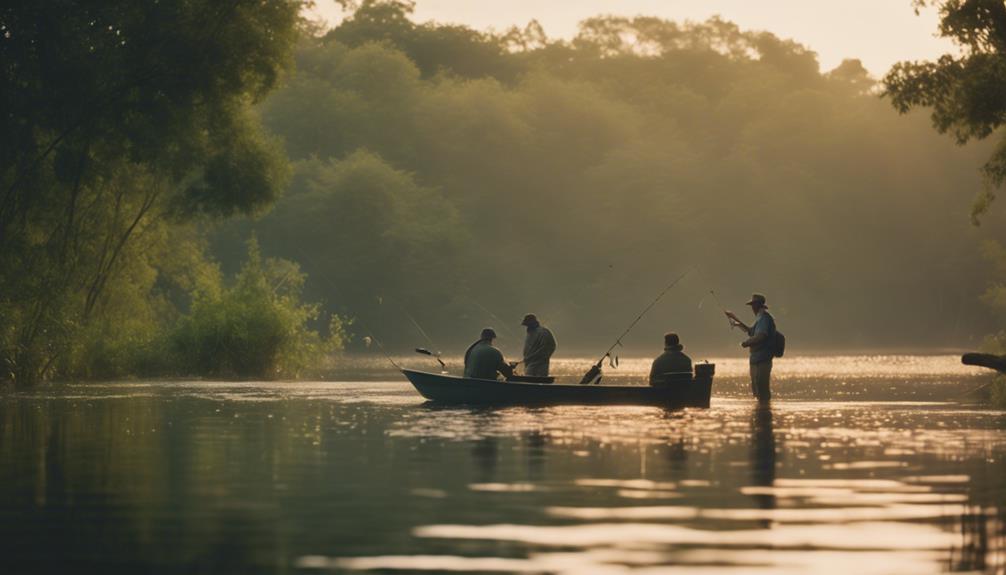Fly fishing for bass is a thrilling and rewarding experience for anglers of all skill levels. Whether you’re a seasoned fly fisherman or a newbie looking to add some excitement to your fishing adventures, this guide will provide you with everything you need to know about targeting bass with a fly rod. In this comprehensive article, we will cover techniques, gear, seasonal strategies, and the best locations to catch bass using fly fishing methods.
Understanding Bass Species for Fly Fishing
When it comes to fly fishing for bass, it’s essential to understand the two main species that anglers target: largemouth and smallmouth bass. Largemouth bass are typically found in warmer, shallow waters and are known for their aggressive feeding habits. They tend to inhabit lakes, ponds, and rivers with abundant vegetation. On the other hand, smallmouth bass prefer cooler, clearer waters and are often found in rivers and rocky areas. Knowing the differences between these species will help you tailor your fly fishing approach to ensure a successful outing.
The Best Fly Fishing Gear for Bass
To make the most of your fly fishing for bass experience, having the right gear is crucial. A 6 to 8-weight fly rod is ideal for bass fishing, as it provides the power needed to cast larger flies and handle the fight of these robust fish. Pair your rod with a quality fly reel that has a smooth drag system to help manage the bass’s powerful runs. When it comes to line, a floating line is often the best choice, allowing you to present your flies effectively at various depths. Additionally, a selection of bass flies, including poppers, streamers, and woolly buggers, will increase your chances of enticing a bite.
Choosing the Right Flies for Bass Fishing
The selection of flies used in fly fishing for bass can significantly impact your success. Poppers are a popular choice for surface fishing, creating a loud disturbance that attracts attention. Streamers, such as deceivers and clousers, mimic baitfish and can be fished at various depths, making them versatile for different water conditions. Woolly buggers are also effective, imitating a range of prey from leeches to small fish. When selecting flies, consider the time of year and the bass’s feeding habits. Matching the hatch is a key strategy in fly fishing, and having a variety of patterns will prepare you for any situation.
Seasonal Strategies for Fly Fishing for Bass
Understanding the seasonal patterns of bass is vital for successful fly fishing. In spring, bass are preparing for spawning, making them aggressive and easier to catch. This is a prime time to use larger, brightly colored flies. As summer approaches, bass may retreat to cooler, deeper waters during the heat of the day, so early morning and late evening fishing becomes more productive. In fall, bass are actively feeding to prepare for winter, and fishing with larger flies that imitate baitfish can yield great results. Winter fishing can be challenging, but targeting deep, slow-moving waters with streamers can still produce bites.
Fly Fishing Techniques for Bass
Mastering different techniques is essential for successful fly fishing for bass. One effective method is the “strip retrieve,” where you cast your fly and then retrieve it in short, quick strips to mimic the movement of injured prey. Another technique is the “dead drift,” which allows your fly to float naturally with the current, ideal for imitating insects or small baitfish. Additionally, practicing your casting skills will significantly improve your accuracy and distance, allowing you to place your fly precisely where the bass are hiding. Experimenting with various retrieves and techniques will help you find what works best for your fishing conditions.
Best Locations for Fly Fishing for Bass
Choosing the right location is a crucial aspect of fly fishing for bass. Look for lakes, ponds, and rivers known for their bass populations. Local fisheries often provide information about the best spots for catching bass. Areas with structure, such as fallen trees, rocks, and weed beds, are prime locations where bass tend to hide. Additionally, shallow flats and points can be productive during spawning seasons. If you’re fishing in rivers, focus on eddies and pools where bass may be waiting to ambush prey. Researching and scouting potential fishing locations will enhance your chances of landing a trophy bass.
Conservation and Ethical Fishing Practices
As you embark on your fly fishing for bass adventures, it’s vital to practice ethical fishing and conservation. Always adhere to local fishing regulations and guidelines, including size and bag limits. Catch and release practices are encouraged to help maintain healthy bass populations. When handling fish, wet your hands to minimize damage to their slime coat and use barbless hooks to facilitate easier release. Additionally, be conscious of the environment by cleaning up after yourself and respecting wildlife habitats. By practicing responsible fishing, you contribute to the sustainability of bass populations for future generations of anglers.
Join the Fly Fishing Community
Engaging with the fly fishing community can enhance your experience and knowledge of fly fishing for bass. Join local clubs or online forums where you can share experiences, seek advice, and learn from fellow anglers. Participating in workshops and events can provide valuable hands-on experience and improve your skills. Additionally, consider following blogs, social media accounts, and YouTube channels dedicated to fly fishing to stay updated on the latest techniques and gear. Building connections within the fly fishing community can lead to new friendships and exciting fishing opportunities.
—
In conclusion, fly fishing for bass is an exhilarating pursuit that combines skill, strategy, and a love for nature. By understanding the different bass species, selecting the right gear and flies, mastering techniques, and respecting the environment, you can maximize your chances of success. So grab your fly rod, hit the water, and enjoy the thrill of fly fishing for bass!
